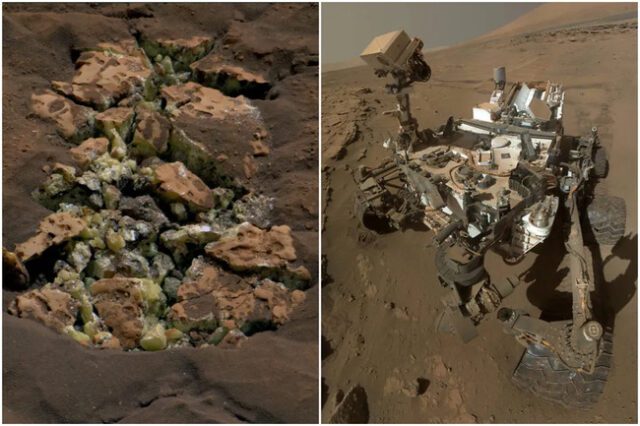
NASA’s Curiosity rover recently made an astonishing discovery on Mars by accidentally crushing a boulder, revealing yellow sulfur crystals. This find is groundbreaking as it marks the first time rocks composed of pure sulfur have been observed on the Red Planet. The conditions required for sulfur crystal formation are typically limited and were not considered present in the region Curiosity explored. Since October 2023, Curiosity has been navigating an area abundant in sulfates, which are sulfur-containing salts formed through water evaporation. While previous detections involved sulfur mixed with other materials, this discovery of elemental sulfur challenges scientists’ understanding of Mars’s geological history. The unexpected nature of this find has sparked excitement among scientists, highlighting the unpredictable and thrilling aspects of planetary exploration.

Curiosity discovered the sulfur crystals while traversing the Gediz Vallis channel, located on the slopes of Mount Sharp, a 3-mile-tall mountain the rover has been climbing since 2014. NASA’s project scientist Ashwin Vasavada described the discovery as finding “an oasis in the desert,” emphasizing its surprising and enigmatic nature. The rover uncovered not just a single crystal, but an entire field of bright rocks similar to the one it crushed, prompting questions about their origin and relationship to other sulfur-based minerals in the area. Previous observations included calcium sulfate, known as gypsum, which is a remnant of ancient groundwater flows. This latest finding adds another layer of complexity to Mars’ geological narrative. Despite sulfur’s common presence in the universe and on Earth, the pure sulfur rocks on Mars present a unique puzzle for scientists to solve, underscoring the ever-evolving and fascinating nature of space exploration.














